
The de Havilland DH.91 Albatross was a four-engine British transport aircraft in the 1930s. A total of seven aircraft were built in 1938–39.

The Aeronca C-2 is an American light monoplane designed by Jean A. Roche and built by Aeronca Aircraft.
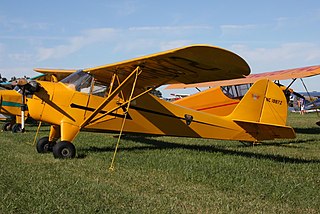
The Aeronca Model K Scout is an American light airplane first marketed in 1937, and was the true successor to the popular C-2/C-3 line.

The Aeronca Model 7 Champion, commonly known as the "Champ", or "Airknocker", is a single-engine light airplane with a high wing, generally configured with fixed conventional landing gear and tandem seating for two occupants.
The Aeronca Model 9 Arrow was a low-wing all-metal cabin monoplane with retractable landing gear. It was marketed to returning pilots from World War II and unveiled in 1947 but never went into production.

The Auster J/2 Arrow is a 1940s British single-engined two-seat high-wing touring monoplane built by Auster Aircraft Limited at Rearsby, Leicestershire, England.

The E-113 was a small flat-twin piston engine developed by Aeronca for use in some of their light aircraft. It was an overhead valve development of the flathead configuration E-107.

The Luton L.A.4 Minor was a 1930s British single-seat high-wing ultra-light aircraft. The prototype was built by the Luton Aircraft Limited, and design plans were later adapted and copies sold for homebuilding.
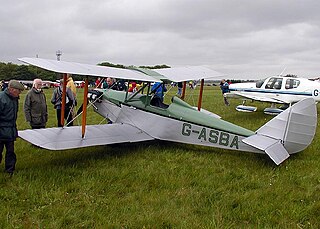
The Currie Wot was a 1930s British single-seat aerobatic biplane aircraft. Plans were sold for home building of the aircraft.

The Avions Fairey Junior, also known as the Tipsy Junior was a single-seat light aircraft built in Belgium following World War II.
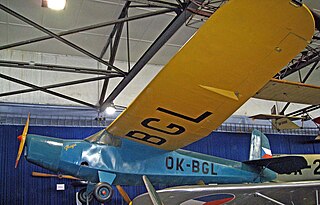
The Praga E.114 was a single-engine sport airplane, designed and manufactured by the Czechoslovakian company ČKD-Praga. Due to its light weight it was also called Air Baby.

Portsmouth Airport, also known as Portsmouth City Airport and PWA , was situated at the northeast corner of Portsea Island on the south coast of England and was one of the last remaining commercial grass runway airports in the United Kingdom.

The B.A.C. Drone was a British ultralight single-seat aircraft of the 1930s.
Hants and Sussex Aviation Ltd was a British aviation manufacturer. Based at Portsmouth Airport, Hampshire, England, throughout much of its existence, the company is still in business in the aircraft components industry.

The Slingsby T.29 Motor Tutor was a single-seat motor glider produced from 1948, by Slingsby Sailplanes in Kirbymoorside, Yorkshire.
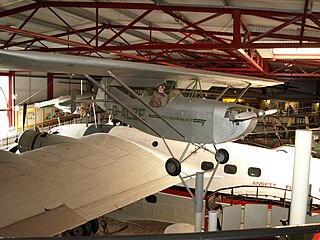
The Britten-Norman BN-1F was a British single-seat ultralight aircraft built in 1950.

The Dart Kitten was a British-built ultra-light aircraft of the 1930s.
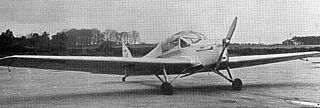
The de Bruyne DB-2 Snark was a British experimental four-seat cabin monoplane designed by N. A de Bruyne and built by Aero Research Limited (ARL) of Cambridgeshire. It was built to test low weight, bakelite-bonded plywood, stressed skin wing and fuselage structures.
The Wren Goldcrest was a British single-seat ultra-light low-wing monoplane designed by R.G. Carr and built by the Wren Aircraft Company at Kirklington near Carlisle in 1946.
The Brumby Aircraft Brumby 600, also known as the Brumby LSA 600 is an Australian single-engined, two-seat, training or touring cabin monoplane. The aircraft is built by Brumby Aircraft Australia as a production or kit aircraft at Cowra Airport near Cowra, New South Wales, Australia. Designed to meet regulations governing light sport aircraft (LSA), it was developed from the Goair Trainer.
















